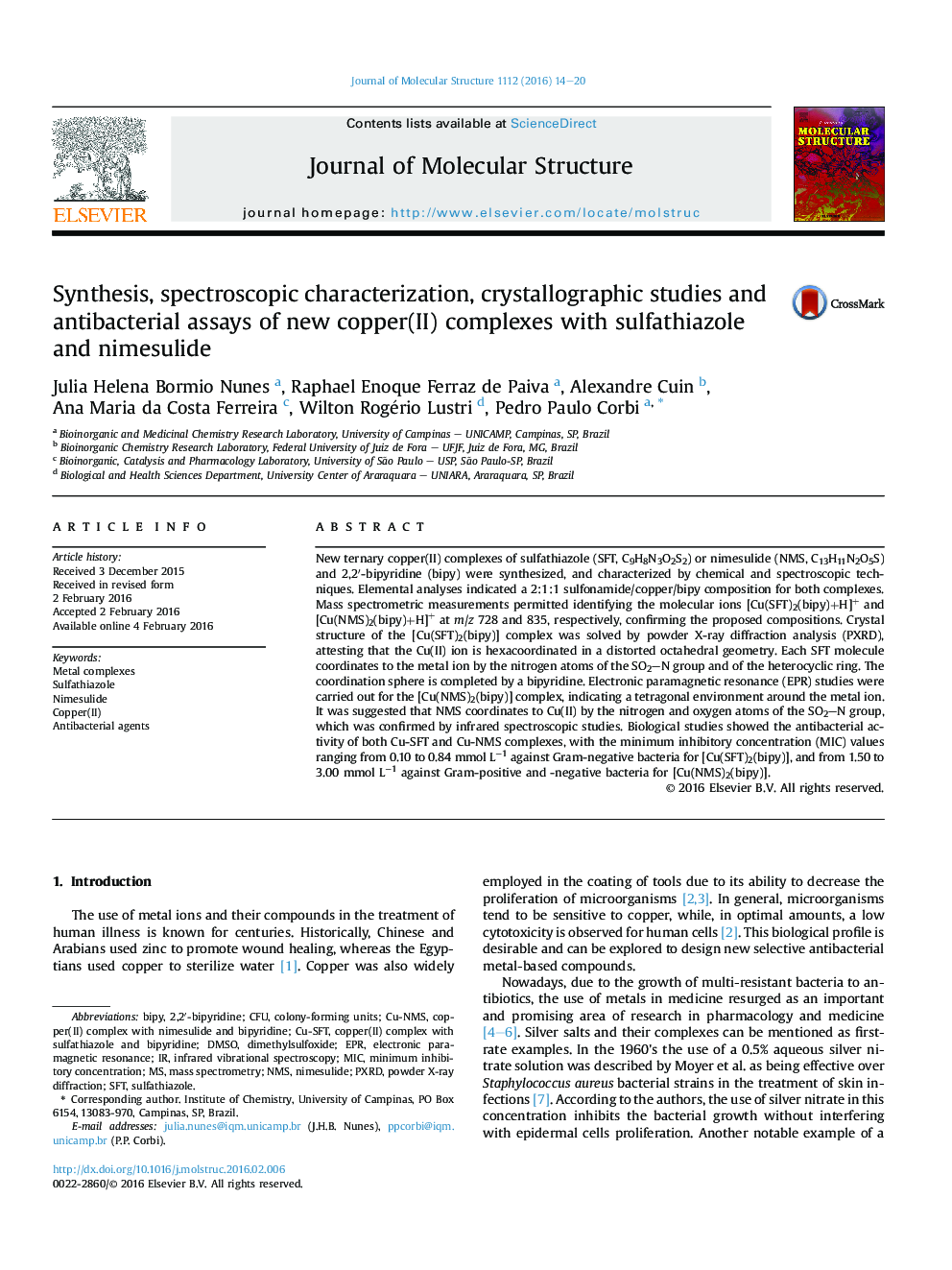| کد مقاله | کد نشریه | سال انتشار | مقاله انگلیسی | نسخه تمام متن |
|---|---|---|---|---|
| 1407877 | 1501705 | 2016 | 7 صفحه PDF | دانلود رایگان |

• New copper(II) complexes with sulfathiazole and nimesulide with 2,2′-bipyridine are presented.
• Crystallographic studies show coordination of sulfathiazole to Cu(II) by nitrogens of the sulfonamide and heterocyclic ring.
• EPR and IR studies show coordination of nimesulide to Cu(II) by the nitrogen and oxygen atoms of the sulfonamide group.
• Copper-sulfathiazole was shown to be active against Gram-negative bacterial strains.
• Copper-nimesulide complex was active against both Gram-positive and –negative bacterial strains.
New ternary copper(II) complexes of sulfathiazole (SFT, C9H8N3O2S2) or nimesulide (NMS, C13H11N2O5S) and 2,2′-bipyridine (bipy) were synthesized, and characterized by chemical and spectroscopic techniques. Elemental analyses indicated a 2:1:1 sulfonamide/copper/bipy composition for both complexes. Mass spectrometric measurements permitted identifying the molecular ions [Cu(SFT)2(bipy)+H]+ and [Cu(NMS)2(bipy)+H]+ at m/z 728 and 835, respectively, confirming the proposed compositions. Crystal structure of the [Cu(SFT)2(bipy)] complex was solved by powder X-ray diffraction analysis (PXRD), attesting that the Cu(II) ion is hexacoordinated in a distorted octahedral geometry. Each SFT molecule coordinates to the metal ion by the nitrogen atoms of the SO2–N group and of the heterocyclic ring. The coordination sphere is completed by a bipyridine. Electronic paramagnetic resonance (EPR) studies were carried out for the [Cu(NMS)2(bipy)] complex, indicating a tetragonal environment around the metal ion. It was suggested that NMS coordinates to Cu(II) by the nitrogen and oxygen atoms of the SO2–N group, which was confirmed by infrared spectroscopic studies. Biological studies showed the antibacterial activity of both Cu-SFT and Cu-NMS complexes, with the minimum inhibitory concentration (MIC) values ranging from 0.10 to 0.84 mmol L−1 against Gram-negative bacteria for [Cu(SFT)2(bipy)], and from 1.50 to 3.00 mmol L−1 against Gram-positive and -negative bacteria for [Cu(NMS)2(bipy)].
Crystal structure of the Cu-SFT complex, with intermolecular (N3–O2, circled in green) and intramolecular (S1–O1, circled in orange) interactions.Figure optionsDownload as PowerPoint slide
Journal: Journal of Molecular Structure - Volume 1112, 15 May 2016, Pages 14–20